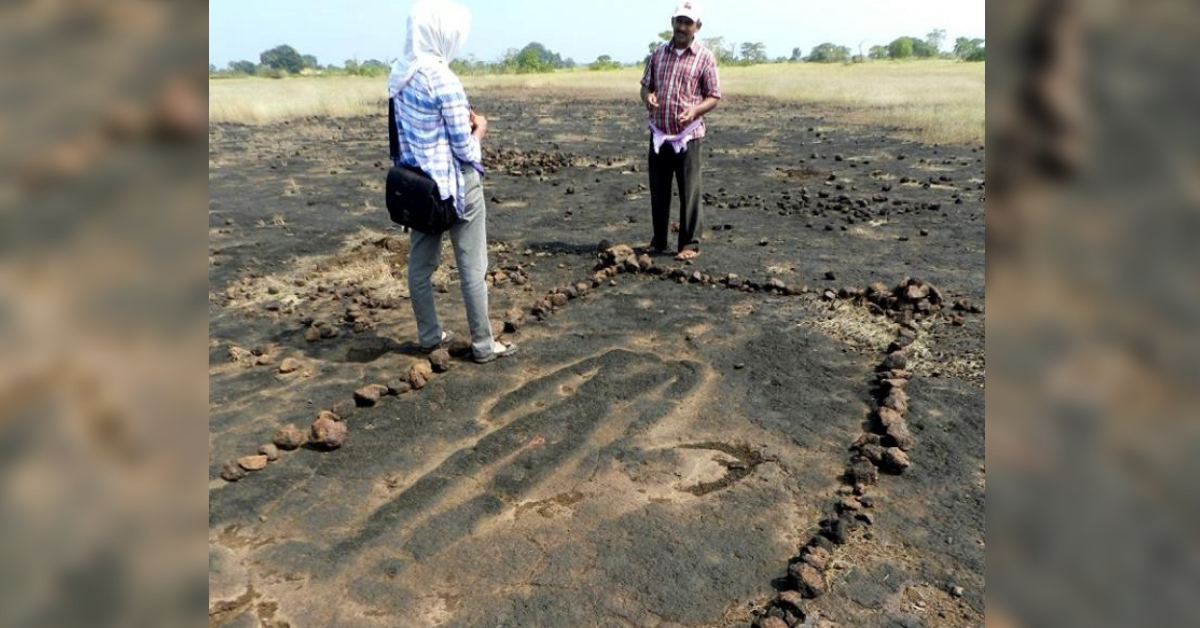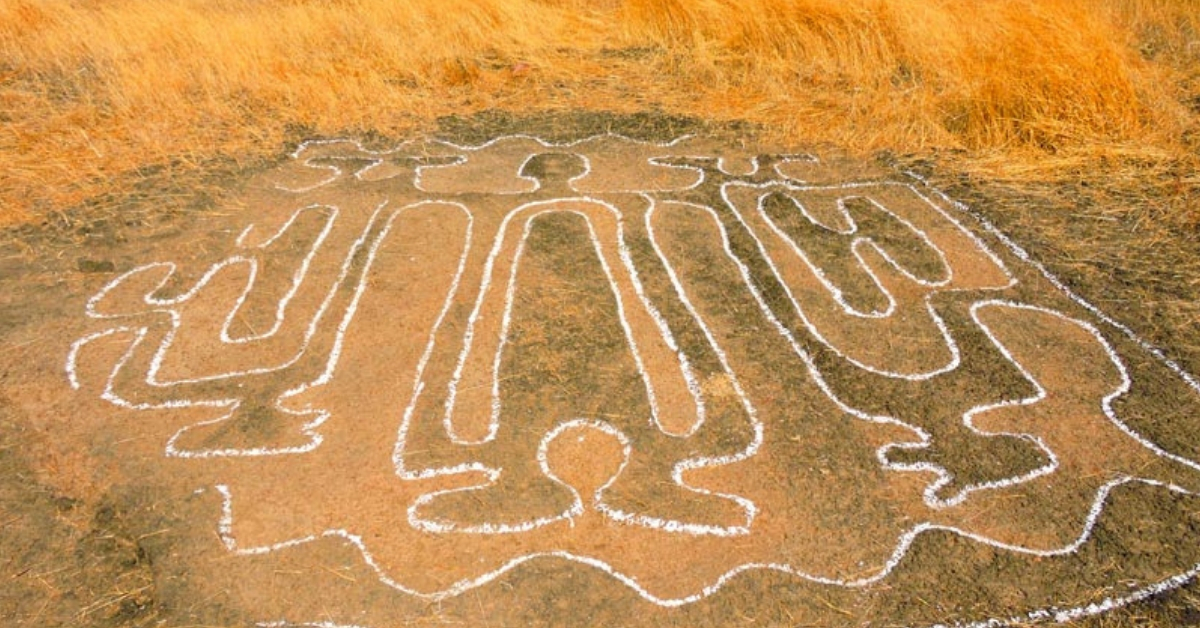Carved by a Lost Ancient Civilisation, ‘History on the Rocks’ Discovered in Ratnagiri!
“The petroglyphs… may be carved by our ancestors in the Neolithic Age, that is 7000-4000 BC. It is very hard to determine the exact period, but these petroglyphs are carved using metal tools, so that is one way of determining the period (of origin).”

As a child, Sudhir Risbood would cycle past a peculiar square-shaped rock, just off the main road in Maharashtra’s Ratnagiri. The concentric circles and artistic curls on the rock made it stand out from the rest.
This rock was different, Risbood knew. But little did he know that it was a clue to a lost ancient civilisation!
Now an engineer working in Konkan, Risbood often cycles and treks in Ratnagiri and Rajapur with his friend, Manoj Marathe. Both of them are electric engineers by profession but have a deep passion for nature and history.
When they were working on a project near the coastal town of Ganpatipule, they came across a rock very similar to the peculiar one that Risbood observed as a child. It was then that it struck him–that it wasn’t by accident that these rocks were unlike the rest in the region.
They held historic importance, evidence even, about ancient cultures.

“In 2012, we decided to see how many more sites like these we could find. We started asking around in the villages and realised that because of the new roads people didn’t walk across the flat rock surfaces any more. But some of the older people knew,” Risbood told The Hindu.
Risbood and Marathe decided to use their passion for trekking and adventure to search for more such rocks. These rocks, were in fact, petroglyphs–images that are carved on rocks as art.
In the following years, the duo unearthed 86 such “drawings” in 10 sites in the Ratnagiri district.
Satish Lalit, who has been studying these petroglyphs in the Konkan region for over 16 years explained, “The petroglyphs… may be carved by our ancestors in the Neolithic Age, that is 7000-4000 BC. It is very hard to determine the exact period, but these petroglyphs are carved using metal tools, so that is one way of determining the period (of origin). The locals had only heard about these images; I asked so many people in these villages about them, but nobody knew the location as nobody had visited the site. They call them Pandava Chitra (pictures) and only knew from their elders that there were some such images on the hill.”
The ancient rock art that Lalit referred to was discovered in Sindhudurg district, just south of Ratnagiri.

Shrikant Pradhan is a professor at Deccan College in Pune. Along with a team of researchers, he has been studying these discoveries to put them in the context of a historical timeframe.
Speaking to The Times of India, Pradhan said, “What we can say from the data gathered till now is that these carvings are from the prehistoric to the early historic period. To prove that it might have been a part of a lost civilisation, we have to find a lot of other things, like stone tools, besides more of these sites. We can also gather that it was definitely not a farming society, but seeing the kind of curvilinear lines on the rocks, there was some advancement in thinking. The lines are abstract but they are in some form, and there is a particular pattern among a lot of them.”
You may also like: 400-YO Shipwreck Reopens Ancient Chapters in India’s Global Trade Saga
Tejas Garge, Director of Directorate of Archaeology and Museums, Maharashtra, added that after studying the available pieces of evidence, the research team has estimated the petroglyphs to be about 25,000 years old.
“If you consider that the records of the port towns are from about 3000 BCE, we are talking of a gap of about 20,000 years. No one knew what happened here during this period,” he said.

This places the period of the petroglyphs in the Mesolithic age (or middle stone age), which existed between the Paleothilic period (old stone age) and Neolithic period (new stone age). The Laterite soil on which they are carved, helped the researchers arrive at this.
You may also like: Keezhadi Excavation: How an Ancient Civilisation Is Being Unearthed in Tamil Nadu!
Risbood, Marathe and other researchers involved in these projects wish to pursue more such discoveries in and around Ratnagiri so that the ancient artwork can be preserved.
As Garge says, the 86 discoveries could help further explore and determine the period to which these petroglyphs belong. However, with more discoveries and proper conservation, the petroglyphs could prove to be the ancient treasure that leads the way to a whole new chapter in history!
(Edited by Shruti Singhal)
Like this story? Or have something to share?
Write to us: [email protected]
Connect with us on Facebook and Twitter.
If you found our stories insightful, informative, or even just enjoyable, we invite you to consider making a voluntary payment to support the work we do at The Better India. Your contribution helps us continue producing quality content that educates, inspires, and drives positive change.
Choose one of the payment options below for your contribution-
By paying for the stories you value, you directly contribute to sustaining our efforts focused on making a difference in the world. Together, let’s ensure that impactful stories continue to be told and shared, enriching lives and communities alike.
Thank you for your support. Here are some frequently asked questions you might find helpful to know why you are contributing?


This story made me
-
97
-
121
-
89
-
167













